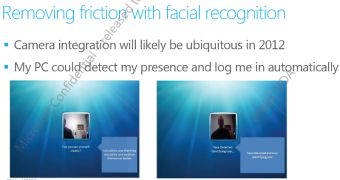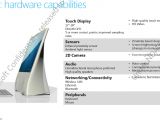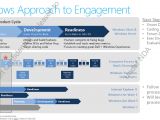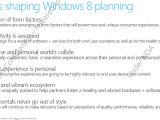Windows 8, the forthcoming desktop operating system from Redmond-based Microsoft, has been recently exposed to the world via leaked documentation that emerged on various websites around the Internet. Slides from a Microsoft presentation were brought to the light, allegedly offering a glimpse at what the successor of Windows 7 would look like, and much more. Details on the marketing plans, on the Windows 8 product cycle, the user identity configurations, and more were also unveiled, basically offering us a glimpse at the software giant’s vision of the future.
Starting with the Windows 8 product cycle, we should mention that the leaked slides refer to three main phases: - Planning (from Framing to Vision): Big picture thinking, themes then scenarios, and feature identification list. - Development (from Vision to Beta): Design and build features, refine SKUs (shelf-keeping units) and value propositions, and begin sharing code. - Readiness (from Beta to GA+90): Feature complete and bug-fixing, establish and track readiness metrics, and focus on creating great Dell + Windows experiences.
While these details might not come as a surprise to many, there are other pieces of information that were brought to light and might not have been expected as much, including the fact that the upcoming OS would show great focus on users' identity (it should benefit from the camera integrated with the system for face recognition), that it would arrive on devices of various form factors, including laptops, netbooks, slates, or that it would be aimed at a much wider market audience than previous versions of the platform were.
Another interesting detail we learn on the upcoming OS is that it should sport some sort of a “reset” button, through which users would be able to reinstall the platform without losing their files, settings and the likes. Internet Explorer 9 would also be present with the operating system, as well as the support for Microsoft’s app store for Windows, dubbed “Windows Store.” The same as currently existing software portals, the Windows Store would offer users the possibility to purchase applications for the platform.
But that is not all. With Windows 8, Microsoft is also expected to show a focus on enhancing the hardware support, including the enabling of high speed connectivity solutions like USB 3.0 and Bluetooth 3.0. The upcoming operating system would bring increased performance levels too, such as faster boot times, connectivity to services and applications. These and a great deal of other details can be extracted from the Windows 8 documentation that emerged into the wild. More coverage can be found here.

 14 DAY TRIAL //
14 DAY TRIAL // 


